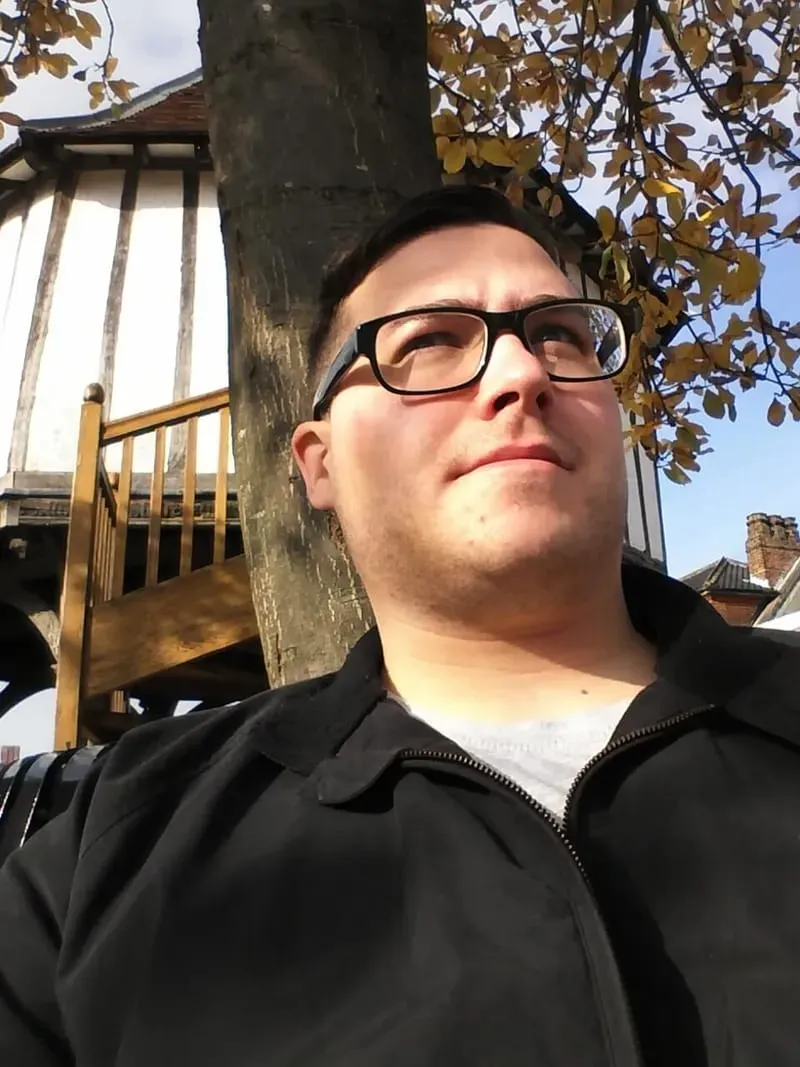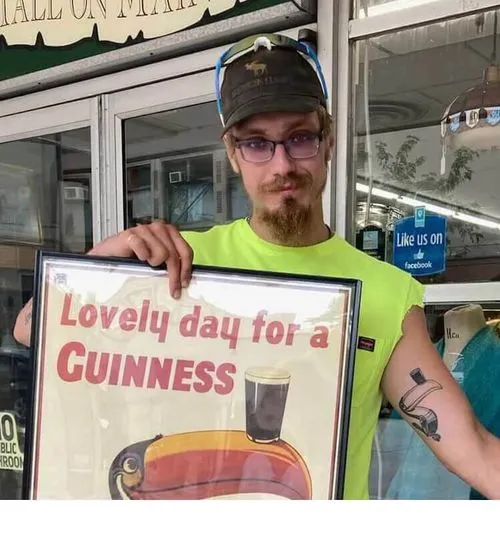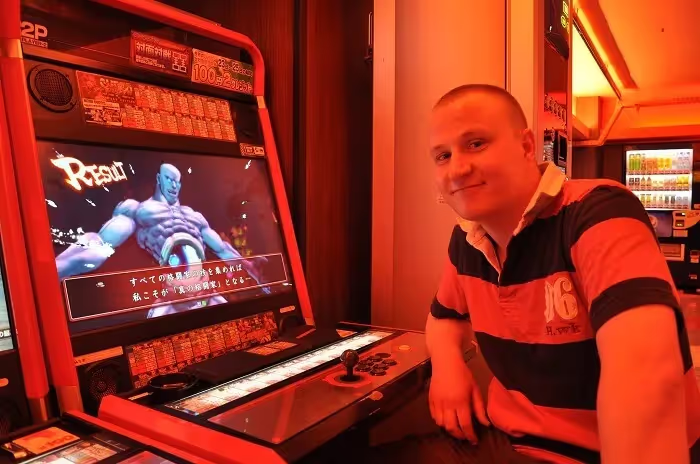January 2021 marks six years since the release of the first episode of Life Is Strange — how time flies. Even though it has been half a decade, its community endures and remains active. To mark this special occasion, we caught up with fans of the game to see how it still impacts their lives to this day, and why they feel so drawn to the game still. So, in this first of a three-part series, here is what Life Is Strange means to its fans in their own words. Many of the game’s themes and plot points are points of contention among fans (the characters’ sexuality, for instance), which is evident from the differing opinions herein. What is clear, though, is that the subjects the games — especially the first — touch on have resonated with players, helping them navigate life in different salient ways.
Spoiler warning: This article contains major story spoilers for the original Life Is Strange, and general spoilers for the Life Is Strange franchise.
Chamlis
One of the most fascinating things I learned talking to so many Life Is Strange fans is that the game’s reach transcends the boundaries of age and gender, and this became readily apparent when I chatted with Chamlis. An Irish-born male in his mid-30s who has been living and working in the US for the last eleven years, he draws fanart and dabbles in fanfiction in his spare time. “I'm originally from Ireland and have been living in the US for eleven years now. “In the early 2000s I studied traditional animation briefly in college before moving onto graphic design and digital media,” he tells me when I ask about his background.

Chamlis wasn’t initially compelled to play Life Is Strange when the first episode released at the start of 2015, and it was only by chance that he ended up giving it a try. “I vaguely remember seeing trailers for Life Is Strange over a period of time in 2015, probably on and off as each new episode was released. I didn't take it seriously until the time came when I was looking for a game that my wife and I could play together. Something without guns and big explosions.”
Chamlis and his wife settled on giving Life Is Strange a try, thinking that the angsty teen look of the game could at least give them some comedic relief. “Episode four had just been released at that time so I picked up the game and we played through until the episode four cliffhanger. I don't think my wife really thought much about it afterwards. I pretended to not think about it either but I was honestly shocked at Chloe being shot. I couldn't wait for the release of episode five. I knew Max was going to fix everything. She had to.”
By the time Chamlis and his wife played the final episode, he was thoroughly invested in Max and Chloe’s fate. “Then came the time to make the choice. The one the fandom refers to as ‘Bae or Bay’. I didn't know that at the time, of course. My wife and I deliberated on it for a bit. I knew the ‘right’ decision was to sacrifice Chloe for the greater good, but after a while I ended up grabbing the controller and said to my wife, ‘You know what? Fuck that town.’ I unknowingly became a proud Baer that day.”
But he wouldn’t truly realise the impact Life Is Strange had on him until later. “I gave little or no further thought to the game or its characters until E3 2017 came around and there was an announcement trailer for Life Is Strange: Before the Storm. All of the memories of playing the original game came flooding back and I found myself listening to the soundtrack on spotify. I would daydream, sometimes, of wandering around Chloe's house and backyard. The game I had played and forgotten about over a year previously was now making me feel homesick for a home I never had. I knew what I had to do. I had to play it again, but on my own this time. Find all the secrets. Do all the things. Try and get the best possible outcomes for everyone in the game. See what that other ending was about.”

Chamlis had been bitten by the bug, and it opened a floodgate of emotion unlike anything before. “It basically broke me,” he says when I ask about how the game affected him. “I was your average, emotionally dead inside, 30-something-year-old man who was now all of a sudden tearing up in the shower, weeping in the basement, and ugly crying in the car while driving to work whenever Spanish Sahara would come on the speakers. It was scary until I stopped fighting it. Then it was cathartic. I cried more for these fictional girls than I did at my own mother and father's funerals. It was then I realized that the game didn't break me; it freed me. I was broken before.”
In an effort to find an outlet for these new thoughts and feelings, he turned to the internet, and found a place he felt he belonged. “I discovered the Life Is Strange subreddit and started interacting with the community for the first time. I found lots of like minded people there, where it became obvious that this game was something pretty special. My taste in music expanded greatly, well beyond the typical indie folk the game is known for. I was generally happier in my day-to-day life, I wasn't keeping things bottled up inside anymore. I like to think it made me a better husband, but I know for a fact it made me a better man.”
This is also when Chamlis began his foray into fan art. “The works of @Mai_Queti, @afterlaughs, @QT0ri, and @ArtKittweetz, to name but a few, inspired me to pick up my own
drawing utensils for the first time in 15 years and start making my own fanart. Some people seem to like what I do and I've amassed a minor Twitter following which I'm pretty proud of. It's purely a hobby for me, as I don't do art for a living like a lot of other fan artists do, so I can afford to be picky and take my sweet time with whatever project I'm working on, with full license to completely abandon it and move onto something else if I can't get it right. That's the main reason why I don't take commissions, but I am always open to requests. I also tried my hand at some of my own fan fiction writing with a few short one shots. It's not my forte, but, again, some people seem to like what I do, and that's good enough for me.”

Reminiscing over the years that have passed since first experiencing Life Is Strange, Chamlis adds, “Life Is Strange has impacted my life in a way that I don't think will ever change, whether it's five years since release or five years from now. I would hope that in the future more entries in the franchise will add to the lore or give flavour to it.”
But how does the original hold up to its sequels? “Overall I think the things they did well add to the lore of the original and the things they didn't do so well are forgivable, so I am glad it exists as an entry in the franchise,” he says about Before the Storm.
However, he isn’t as happy with how Life Is Strange 2 turned out.
“Life Is Strange is more than the sum of its parts. Life Is Strange 2 is exactly the sum of its parts, and I find it lacking. It seems that in Dontnod's attempt to distance themselves from the setting and themes of the original they ended up creating what is arguably the antithesis to the original Life Is Strange in every way that matters. All of the things that make [the original] good are either missing entirely or are the exact opposite in LIS 2. I want to like the game, but I can't. In fact, my general apathy towards it shifts into disdain when I consider the two deliberate references to the original LIS that are in the game. The first is a lecture from Brody to fans of the original that we should all just ‘let it go’, and the second is the complete destruction of Chloe Price's beautiful and iconic tattoo. They could have just left it alone, or they could have maybe changed parts of it, thereby updating it to reflect the events of the first game, or they could have added new tattoos to the same effect instead. As fans of the original, we would have loved that,” he tells me. “Instead, they destroyed it for absolutely no reason whatsoever.”

Life Is Strange is, perhaps, so touching to its fans because it reflects real-life experiences common to so many. “I think the thing that hooks most people, myself included, is the beautiful friendship between Max and Chloe,” says Chamlis. “Now, before everyone freaks out, I am absolute Pricefield trash through and through. But there is a lot to be said for that feeling of having a best platonic friend. Someone you can rely on completely and that you would do anything for. Something a lot of people can identify with having when they were kids but probably not any more since they are adults, which, of course, adds to the feeling of nostalgia that the game invokes as a whole. I have had a Chloe Price in my life in my younger years. I've also had a Rachel Amber in my life. Hell, I've even been someone else's Chloe Price for a little while myself. But I think everyone, no matter who you are, has a little Max Caulfield inside them. Everyone can identify with Max, either within themselves or with someone close to them.”
As I finish up my conversation with Chamlis, he shares his feelings on the strange allure of Life Is Strange; what it is that draws people in so wholly. “Life Is Strange is a modern-day tragedy. It has no happy endings. People and characters we care about get hurt or worse, and it sucks. But within this universe is something unique, the keys to everyone's happiness: time travel and its side effects of a multiverse with multiple timelines. It's a promise that somewhere out there, within the rules of the game, is a timeline where everything is awesome, if only you can figure out how to get there. Some people have tried to fix everything, leading to some amazing fan fictions. Others have bypassed the tragedy by creating alternate universes that could potentially exist as different timelines. But everyone who has been touched by this game has been given their own set of these keys and that's why there is so much creativity in this fandom from a lot of people who wouldn't normally do that sort of thing. That's something pretty special in my opinion, and I don't know of anything else out there like that. I'm a pretty hardcore Star Trek fan myself, but you'll never catch me doing fan fiction or fan art for that! I would never even read any Star Trek fan fiction, let alone write it. But LIS just draws it out of you somehow, and I strongly suspect that if it wasn't a tragedy it probably wouldn't have quite the same impact that compels people to express themselves creatively.”
Before we part ways, he shares how people outside of the community view his passion.
“Friends and family think it's weird that a man is spending a lot of free time thinking about two teenage lesbians. They just don't understand.”
You can find Chamlis and his artwork here.
Rennan
Rennan is a 17-year-old from the state of São Paulo, Brazil. His first experience with Life Is Strange came from a YouTube Let’s Play in 2015. “I saw the first episode and then never saw the game again because the YouTube channel stopped playing,” he says. “Later, I saw that the game had fully launched, but I didn't want to see the game. I wanted to actually play that game.” So Rennan scraped together enough money for a PlayStation 4 and a copy of the game. Like others I interviewed, Rennan’s first impressions from the game come from its strong indie soundtrack. “The moments in the game that stuck in my mind were the music scenes. They were so powerful they really gave me goosebumps.”

One common theme we’ve seen so far is that the game helps its players to learn and grow, and it’s no different for Rennan, who learned more about friendship and community. “In 2015, I stopped talking with two friends and I never discovered why, but after [playing] Life Is Strange I realised that friendship is something that you need to invest in naturally. I still had a friend with me that I started to realise he [would do] anything for me and I never realised this. He is still my friend. I've made a friend in the LIS community [too], and we talk a lot. I love the community of Life Is Strange because it unites so many people from so many countries, and that is so cool.”
Even though he still downloads and plays the original game to this day, Rennan thinks that each entry in the series has its own identity and purpose. “[The first game] still has so many discussions to make and lessons to teach. Before the Storm has so many things to add in the Life Is Strange universe that [makes it] almost obligatory. After you play Before the Storm, you realise how difficult it was for Chloe. Your perception of Chloe changes a lot. And Life Is Strange 2 taught me more things than the first; I consider it even more important than the original game. But each LIS game has its own feel and lessons, which are difficult to compare.”
Rennan does, however, think that playing Life Is Strange has helped him for the better, giving him the confidence to pursue his dreams in cinema. “I never had a situation as serious [as] the situations in LIS, but the lessons that the game shows to us was exactly the lessons I needed: all the parent situations, friends, school and pursuing your dream. If it wasn't for LIS I never would have had the courage to try cinema school, because here in Brazil it is really difficult and doesn’t have the investment that it needs.”
As my time with Rennan comes to an end, he contemplates on how Life Is Strange is more than just a game for him.
“Life Is Strange changed my perception about gaming, friendship, careers, music and a lot of things that I can't see myself without these days. This game is a masterpiece and should be remembered not just the first but the Life Is Strange universe as a whole. [It] brings so many things to help you evolve as a person, and Life Is Strange 2 brings so many recent discussions about the world and family. Life Is Strange is my favorite franchise and I will remember how those games changed my life completely.”
Gabe
Also 17 years old and hailing from Virginia, USA, Gabe is a photography student. “I come from a somewhat broken home. No dad. Not so friendly family. All the fun stuff,” he says when I ask him to tell me a little about himself. “I would describe myself as an introverted person. I love being around my friends, but I'm constantly anxious and don't do well around new people. However, if I'm comfortable around the people I'm with, I'm talkative and constantly making dumbass jokes to get chuckles.”

Unlike a lot of fans, Gabe only picked up Life Is Strange around a year ago. “I had heard good things about it from my friends but really became intrigued once my friend had compared it to an anime by the name of Erased.” He adds with wit, “After buying it I played the first episode and quickly fell in love with the characters and story, so as a logical and mature person I played the entire thing in like 2 days.”
Coming to it so long after release has given Gabe a different perspective, as he wasn’t consumed by the game’s early hype, though there is still a certain Dontnod je ne sais quoi that pulled him in. “While the game feels dated, it has a charm to it that feels real. The characters are believable and make sense. The story follows a simple but interesting path. I was never confused or bored during my playthrough.” But with his first playthrough so fresh and the games industry moving at breakneck speed, Gabe is also critical of aspects of the game. “There are certain things I do dislike, however, like Max's lack of emotion at certain parts of the game or the less than amazing twist of Jefferson being the killer. In fact I thought it was him from the very start.”
Life Is Strange still feels more like an emotional experience rather than a video game to Gabe. A “glimpse into another life,” as he puts it. And one moment from the game that struck him is Kate Marsh’s attempted suicide, which he describes to me as, “a heavy event that could and does happen in the real world very often.”
“We've all struggled with those thoughts,” he adds.

The game’s ending was also difficult for Gabe. “The last choice is a love-hate thing. It was so abrupt and sudden and you really had to pick between the lives of thousands and Chloe. Logically, the choice is obvious: save the town, save thousands of lives. But I still always pick Chloe. It just feels right, I guess. [I] Never understood that myself.”
Interested in how individuals interact with communities, I asked him how he found the Life Is Strange community. His answer wasn’t as glowing as the others we’ve seen so far. “This one’s going to be a controversial one, but I dislike the community for Life Is Strange. Granted there is a large vocal part of it that's lovely, kind people with a love and fondness that I share, but then the other part of it that's the same toxic mess that nothing can really escape,” he says.
He theorises that the toxicity took root from some zealous fans who take some of the choices you can make as exclusively canon. “I think it really stems from the fact the Chloe and Max are widely considered to be gay. Which means certain groups are either going to hate that one small fact and the whole game by default or the other groups that take it to the extreme, and if you say anything remotely negative about the character or game for any reason, it's automatically a sexuality thing. Terms like ‘homophobic’ are thrown around far too much.” Gabe is referring to the fact that many fans automatically assume Chloe and Max’s relationship to be more than platonic (which is a decision you can make), but the player actually has multiple choices in this regard, including romancing male character Warren.
It’s not all bad, though, and according to Gabe the community has been beneficial overall. “But, in general, this game has connected me to a good bunch of people who I consider to be friends. While we don't talk about the game as much anymore, we still do occasionally. So I’d say for the most part the community has had a good impact on me.”

Turning attention to the franchise as a whole, Gabe echoes a lot of other fans’ opinions. “Life Is Strange is very unique to me, [but] I wasn't a fan of the second one. It didn't feel as alive. I did quite enjoy Before the Storm, but it was pretty short, with an ending that was obvious. I didn't play Life Is Strange six years ago, so I can't offer as much perspective, but even after playing all the AAA 4K games that have been released, I still love Life Is Strange.”
Part of the reason Life Is Strange garners praise is for its relatability to quotidian life. Gabe empathises with Chloe’s grief over losing her father as his own was never in his life, and can draw parallels between the character’ experiences and his own.
“Max's self-doubt and attempts at helping everyone really stood out to me. I've always tried to help people, and when I don't do something perfectly I feel frustrated with myself. Kate's suicide attempt is another one. I was never on the edge of a roof top, but there were times I was almost ready to [be]. Max's photography dream was another similarity. It was nice seeing her just take photos of stuff she liked, mirroring me almost perfectly.”
Gabe considers his final thoughts on the game as we wrap up. Is Life Is Strange simply a video game, or is it something more intangible?
“I feel very connected to this game, and while I definitely understand it's just a game, the story it tells and messages it projects always felt human.” And he thinks that the flaws of the game reflect real life. “I've seen so many people talking about [the ending] and how much they hate it. I can understand this, but I feel like it made sense in a way. Of course there were better ways to do the ending and I felt the ending didn't land the way they wanted, but in life there aren't happy endings.”
“The entire game you’re told about the butterfly effect, and the ending almost nails that idea. You cannot have everything.”
***
This is part one of three in a series about the lasting effects of Life Is Strange on its fans six years after release. Check out part two next week for more in-depth interviews!
You can subscribe to Jump Chat Roll on your favourite podcast players including:
Let us know in the comments if you enjoyed this podcast, and if there are any topics you'd like to hear us tackle in future episodes!




